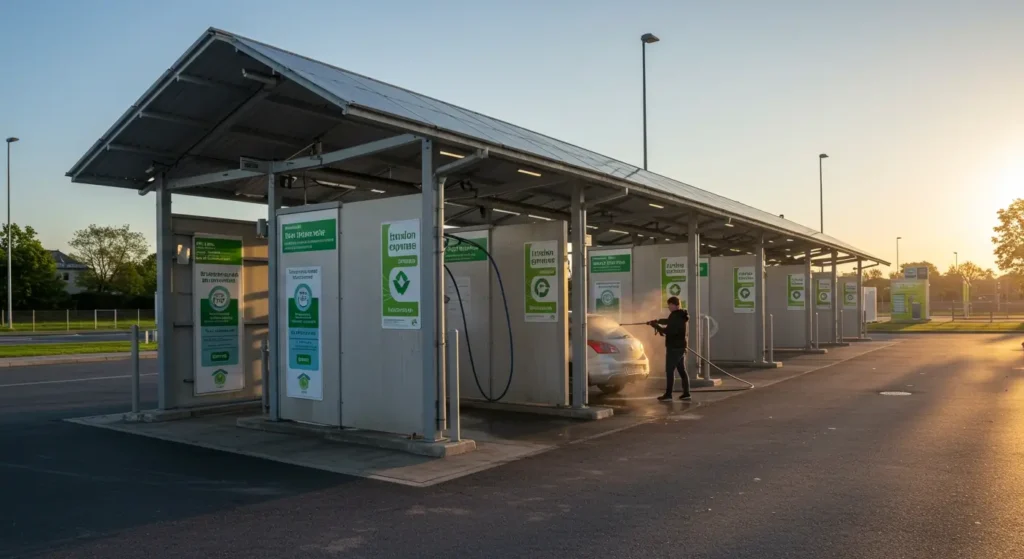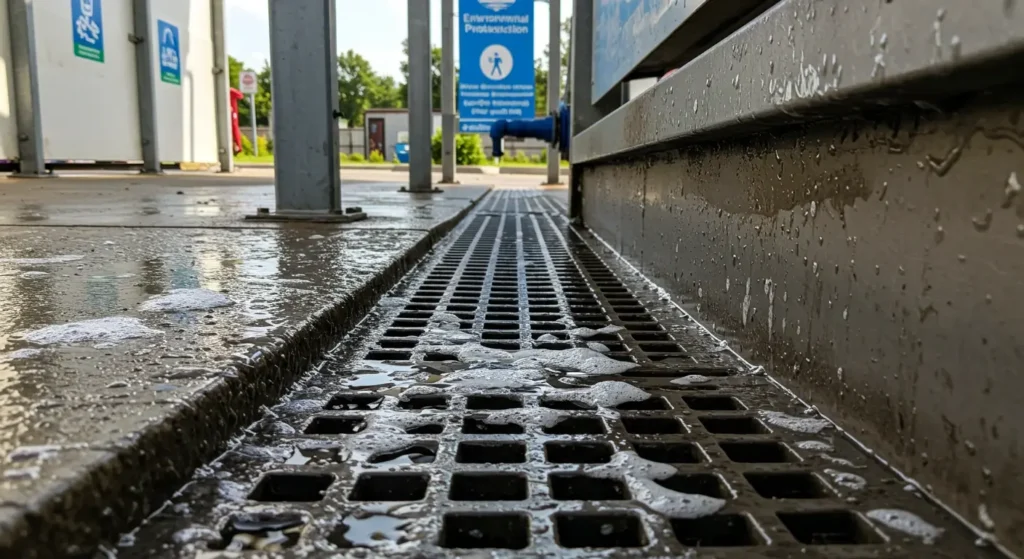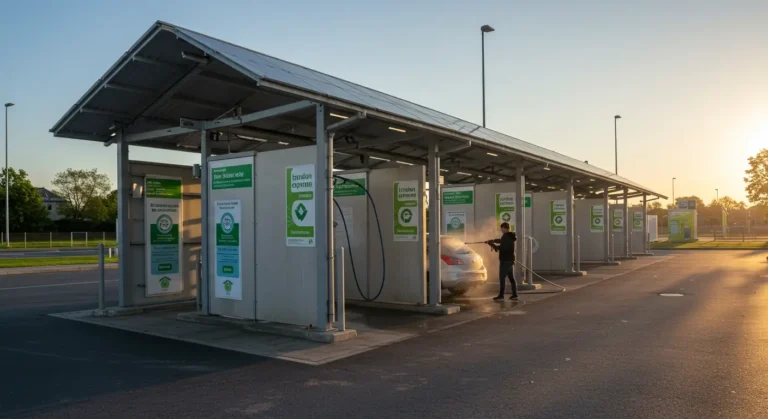I’ve been in the car wash industry for close to two decades now—started off hosing down cars as a summer gig, ended up owning three self-serve locations outside of Portland. Let me tell you something that might surprise you: that driveway wash you’re doing? Environmental nightmare. Seriously.
Most folks don’t realize it, but when you’re scrubbing your Subaru in the driveway, all that grimy, soapy runoff? It’s heading straight into storm drains. No filtering. No treatment. Nothing. Just raw soap, road oil, gasoline residue, and whatever else was clinging to your undercarriage flowing directly into local streams and watersheds. Fish hate that stuff. So do frogs. So does basically everything alive in water.
Self-serve washes, though? Different beast entirely.
My locations—and most legitimate operations across the country—use drainage systems that would make an environmental engineer smile. The water doesn’t just disappear down a hole and magically become someone else’s problem. Nope. These systems capture that nasty cocktail of contaminants through a series of settling tanks, oil/water separators, and sometimes even biological filtration processes.
I spent $47,000 on my first recycling system back in 2009. Worth. Every. Penny.

Water Conservation: The Numbers Don’t Lie
Here’s something that’ll blow your mind: the average driveway washer uses between 80-140 gallons of water per car wash. That’s absolute madness! Garden hoses are notoriously inefficient, especially those without shut-off nozzles. Water just pouring down the concrete while you’re scrubbing away, thinking you’re saving money.
At my bays? Try 15-30 gallons per wash.
How? High-pressure, low-flow nozzles, for starters. Plus the fact that you’re paying for that water makes you remarkably more conscious about keeping that trigger released only when absolutely necessary. Nothing motivates conservation like watching a digital counter tick down your remaining time!
I’ve got timers on all my equipment too—the kind that shut off automatically if some distracted customer walks away with the wand running. That alone saved me roughly 11,300 gallons last year. My water bill doesn’t lie.

The Electricity Angle Nobody Talks About
Self-serve washes aren’t exactly off-grid hippie communes, but compared to those tunnel washes with their massive blowers, conveyor systems, and enough lighting to illuminate a small airport? We’re practically energy misers.
My three locations together use less electricity than one automatic tunnel wash. That’s not exaggeration—that’s my utility bills talking.
Two of my locations even have solar panels supplementing the power supply now. They don’t cover everything (this is Oregon, after all—we see the sun about as often as people see Bigfoot), but on good days they handle about 35% of our needs. By next summer, I’m aiming for 50%.
Biodegradable Products: Not Just Marketing Fluff
Listen, I could save about $1,200 a month by switching to cheaper detergents and waxes. Plenty of operators do. But I sleep better knowing I’m using biodegradable products across all my locations.
The suppliers laugh sometimes. “Dave, you’re paying premium for something that goes down a drain!” Yeah, well, my kids swim in the rivers around here. So do my customers’ kids.
These eco-friendly soaps break down naturally in water. They don’t persist for years, disrupting aquatic hormones and killing plant life. The foaming agents dissipate faster too—less of those weird suds-islands floating downstream that you sometimes see below conventional car washes.
Are they as “heavy-duty” as the industrial-strength stuff? Maybe not. But they get the job done, and I don’t have to worry about contributing to a three-eyed fish situation in local waterways.
DIY = Less Chemical Waste
Ever notice how those automatic washes just BLAST your car with product? It’s like they’re trying to use up inventory. There’s no discrimination—spotless roof? Still gets the full soap treatment. Just waxed last week? Here’s another coat, whether you need it or not!
At a self-serve bay, you control exactly what goes on your vehicle and how much. My customers typically use 60-70% less product than an automatic wash would apply to the same vehicle. That’s not just good for the environment—it’s better for your car’s finish too. Ask any serious detailer about chemical buildup sometime if you want to see someone have a conniption fit.
The Inconvenient Truth About Convenience Washes
Those express exterior washes popping up everywhere? They’ve got their place, I guess. But environmentally friendly? Please. They’re about volume—washing 80-100 cars per hour, minimal labor costs, maximum profit.
They recycle some water, sure, but the sheer chemical volume is staggering. And have you ever looked at their drying agents? Most contain petroleum distillates that help water sheet off quickly. Great for throughput. Not so great for everything else.
At my self-serve locations, customers who care take their time. They use what they need. Nothing more. When you’re standing there with a wand in your hand, watching the timer count down, you develop a whole new appreciation for efficiency.
Bottom Line: It’s Not Perfect, But It’s Better

Look, no car washing is truly 100% environmentally pristine unless you’re using collected rainwater and washing your car in the middle of a field where the runoff waters wildflowers. But in the real world, where cars get dirty and need cleaning, self-serve washes offer the best practical balance.
Less water waste. Reduced electricity consumption. Controlled chemical application. Proper water treatment systems. It all adds up to a significantly smaller environmental footprint than either driveway washing or those flashy tunnel operations.
So next time you’re thinking about dragging out the garden hose and bucket, maybe reconsider. Your local waterways will thank you. The fish will thank you. And honestly, you’ll probably do a better job anyway. Those hard-to-reach spots don’t clean themselves, no matter what the automatic wash promises.


